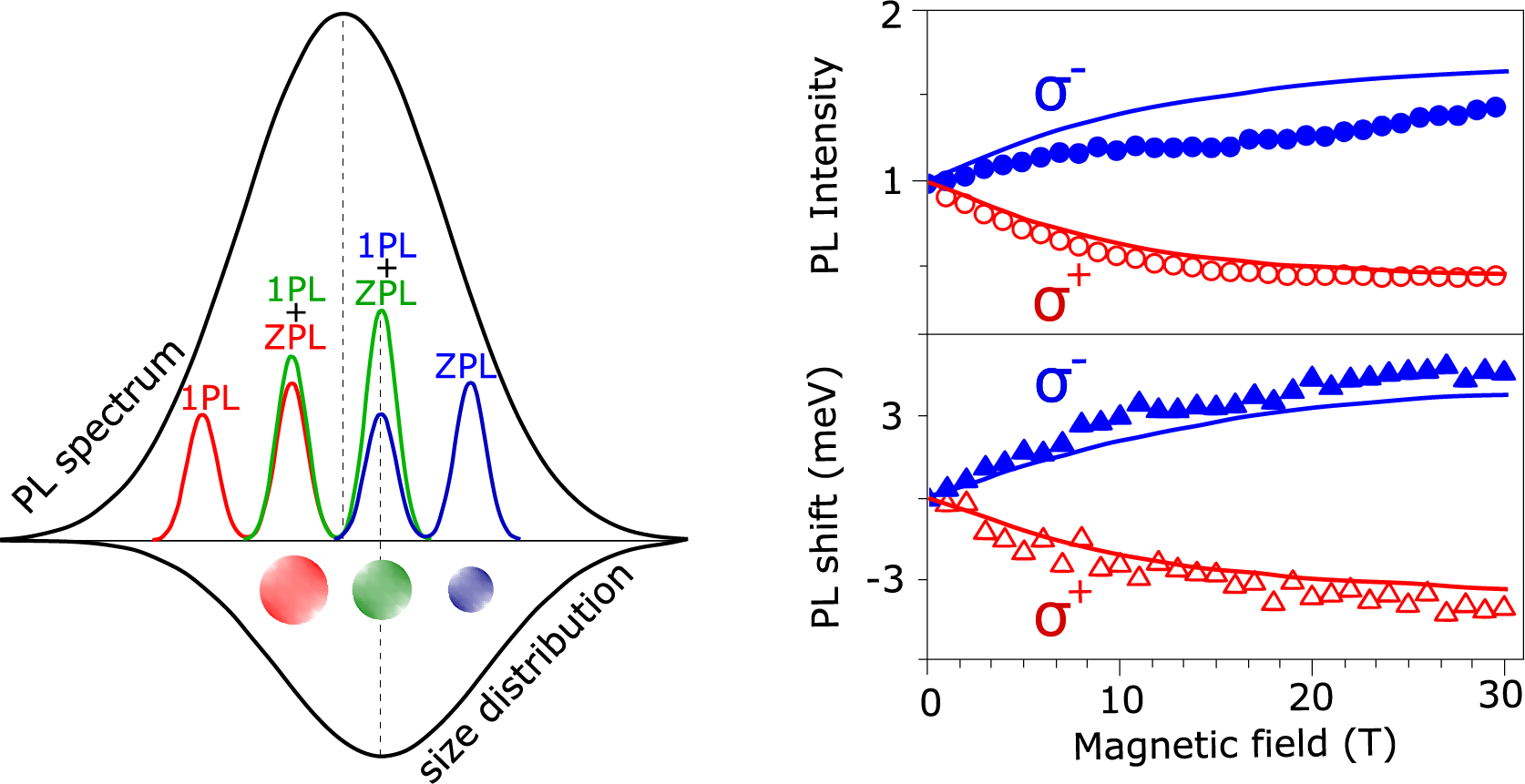Dmitri Yakovlev and Peter Christianen, HFML Nijmegen.
For a few decades, colloidal semiconductor nanocrystals have been the focus of intensive research. Due to the continuous progress in technology, nanocrystals with different sizes, shapes, compositions, and surface properties have been synthesized. Understanding their optical, electrical, and chemical properties has led to applications in various fields, such as light-emitting diodes, laser technology, field-effect transistors, solar cells, and biological labels. In these efforts, external magnetic fields have been used as a powerful tool not only to address magneto-optical properties and spin-dependent phenomena, but also to determine the basic optical properties of the nanocrystals, which are dominated by absorption and emission of coupled electron-hole pairs (excitons).
Usually, these experiments were performed on wet-chemically synthesized nanocrystals, showing a number of interesting magnetooptical effects: a field-induced shortening of the exciton lifetime, circular polarization of the photoluminescence emission, a finestructure splitting of the exciton energy levels, including the Zeeman effect in single nanocrystals, an anisotropic electron-hole exchange interaction, and electron-spin coherence. However, these previous photoluminescence experiments also revealed several unusual appearances: (i) a spectral dependence of the photoluminescence circular polarization degree, (ii) its low saturation value, and (iii) a stronger intensity of the Zeeman component which is higher in energy. The latter feature is the most surprising being in contradiction with the thermal population of the exciton-spin sublevels.
To resolve these open questions a team of researchers of the TU Dortmund, the Ioffe Institute and the ITMO University, both in Saint Petersburg, and the High Field Magnet Laboratory (HFML-EMFL) in Nijmegen performed experiments on CdSe nanocrystals embedded in a glass matrix, a system that had not been investigated before in high magnetic fields. They measured polarized photoluminescence in magnetic fields up to 30 T and observed the same puzzling behavior as the earlier reports described above. The team developed a model that takes into account the cumulative contribution of both zero-phonon and phonon-assisted recombination of dark excitons to the emission spectra of the nanocrystal ensemble. This model describes well all unusual experimental findings and can be readily extended to other colloidal nanocrystals, whose inhomogeneous broadening exceeds the optical phonon energy. These results demonstrate the promising role that colloidal nanocrystals could play for spintronics and quantuminformation applications based on spin-dependent phenomena.

Figure: (Left panel) Photoluminescence spectrum of an ensemble of colloidal CdSe nanocrystals as a combination of zerophonon (ZPL) and phonon-assisted (1PL) emission of differently sized quantum dots. This results in a peculiar behavior of the circularly polarized photoluminescence emission in high magnetic fields: the higher energy, σ-polarized exciton level has a higher intensity (blue curves in right panel).
Polarized emission of CdSe nanocrystals in magnetic field: the role of phonon-assisted recombination of the dark exciton, G. Qiang, A. A. Golovatenko, E. V. Shornikova, D. R. Yakovlev, A. V. Rodina, E. A. Zhukov, I. V. Kalitukha, V. F. Sapega, V. Kh. Kaibyshev, M. A. Prosnikov, P. C. M. Christianen, A. A. Onushchenko, and M. Bayer, Nanoscale 13, 790 (2021). https://pubs.rsc.org/en/content/articlelanding/2021/nr/d0nr07117j#!divAbstract
Contact: peter.christianen@ru.nl






